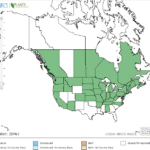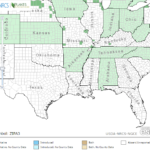Zizania palustris
USDA, NRCS. 2018. The PLANTS Database (http://plants.usda.gov, 28 March 2018). National Plant Data Team, Greensboro, NC 27401-4901 USA.
Illustration: USDA-NRCS PLANTS Database / Hitchcock, A.S. (rev. A. Chase). 1950. Manual of the grasses of the United States. USDA Miscellaneous Publication No. 200. Washington, DC.
What is Northern Wild Rice?
Physical Characteristics
Leaves:
- 7.87-23.6 inches long
- 0.12-1.57 inches wide
- Fleshy
- Edges smooth
Flowers:
- 9.45-23.6 inches long
- 7.87-15.75 inches wide
- Branching
Fruit:
- Dry
- One-seeded
Stem:
- Hollow
- Reed-like
- 3-6 feet long
- Spongy
Where Does it Grow?
Northern wild rice can be found in ponds and lakes or along the edges of streams and marshes.
Pros and Cons of Northern Wild Rice
Submerged portions of all aquatic plants provide habitats for many micro and macro invertebrates. These invertebrates in turn are used as food by fish and other wildlife species (e.g. amphibians, reptiles, ducks, etc.). After aquatic plants die, their decomposition by bacteria and fungi provides food (called “detritus”) for many aquatic invertebrates.


